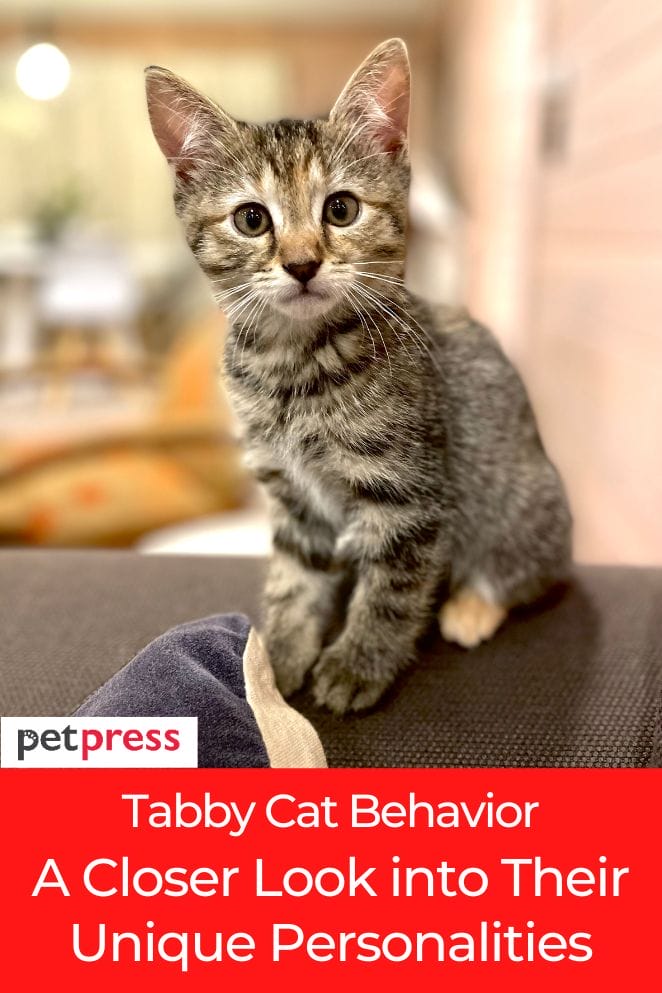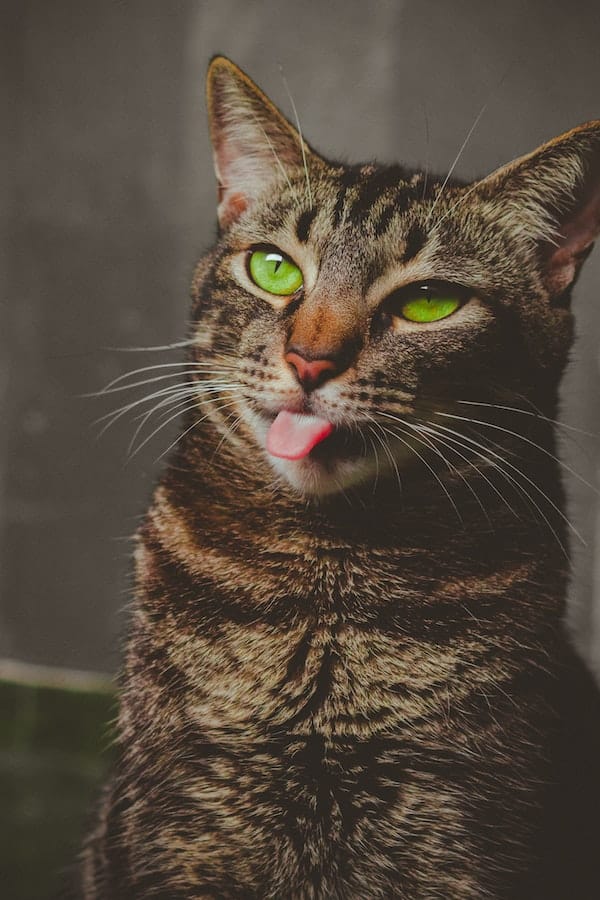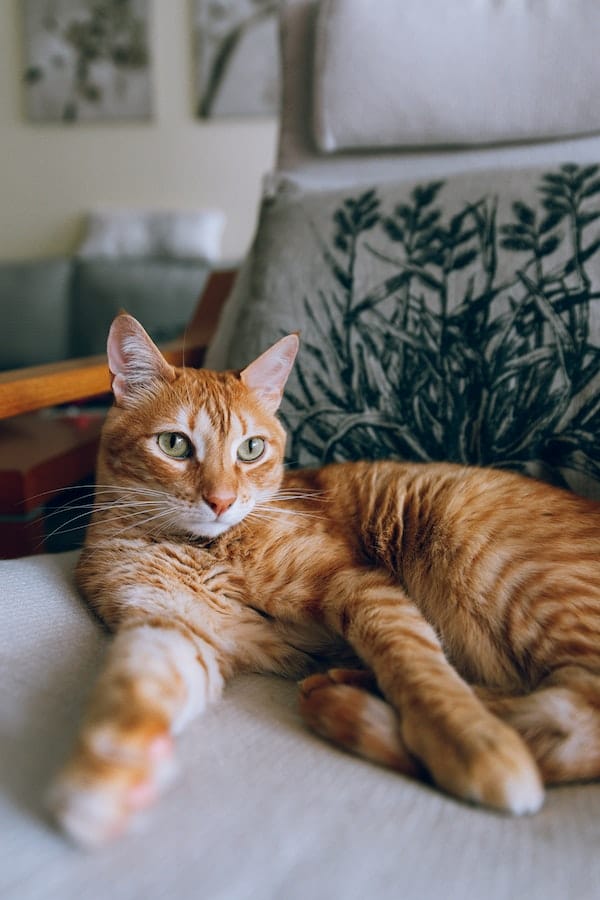
Hey there, feline aficionados! If you’re the proud human of a tabby cat, you’re in for a treat.
Tabby cats are like a puzzle wrapped in a furry enigma, each with their unique personalities and behaviors.
In this blog post, we’re diving headfirst into the delightful world of tabby cat behavior.
We’ll explore what makes them tick, the challenges they might pose, and how you can train them like a pro.
Tabby Cat’s Unique Personalities and Behaviors
Tabby cats are like a box of assorted chocolates – you never quite know what you’re going to get, but it’s always a delightful surprise.
Here are some common tabby cat behaviors and personalities:
Playful and adventurous
Tabby cats are the adventurers of the feline world.
They have an endless reserve of energy and curiosity that drives them to explore every nook and cranny of your home.
Picture them as tiny, furry Indiana Joneses, always up for a new quest.
Affectionate cuddle buddies
Many tabbies have a soft spot for snuggling.
They love to be close to their humans, offering warmth and contentment like a purring blanket on a chilly day.
It’s a comforting presence that brings joy to your home.
Talkative chatterboxes
Some tabbies are quite the conversationalists.
They’re not shy about sharing their thoughts and feelings with their humans.
Engaging in “chats” with them is like having a chatty friend around, always ready for a good talk.
Independent spirits
While tabby cats can be affectionate, they also have a streak of independence.
They value their alone time and might not always be in the mood for cuddles.
It’s their way of asserting their autonomy and taking a break.

Common Tabby Cat Behavioral Challenges
Tabby cats are full of charm, but they can present a few challenges too.
Let’s dive into some of the typical behavioral quirks you might encounter:
Scratching
Many tabbies have a strong penchant for scratching.
They’re not trying to ruin your furniture; it’s just a natural instinct.
To protect your couch and other cherished items, consider investing in a sturdy scratching post.
It’s like providing them with their very own spa day.
Food fussiness
Tabby cats can be a tad picky when it comes to food.
They have their culinary preferences, and finding the right diet can sometimes feel like embarking on a culinary adventure.
Patience and a little trial and error are your best allies in satisfying their taste buds.
Litter box preferences
Some tabbies are quite particular about their litter boxes.
They might have specific preferences when it comes to litter type and cleanliness.
Experiment with different options to find what suits them best.
It’s like ensuring they have a spa-like experience in the bathroom.
Social behavior
Tabby cats can be selective about their social interactions.
They value their personal space and boundaries, and it’s essential to respect that.
Just like we have days when we’re more social and other days when we’d rather have some alone time, tabby cats have their moods too.

Tips on Training Tabby Cats
Training your tabby cat can be a rewarding and fun experience, but it’s essential to do it the right way.
Here are some valuable tips to help you navigate the training journey:
Positive reinforcement
Tabby cats respond exceptionally well to positive reinforcement.
Use treats, praise, and affection to reward good behavior.
It’s like creating a system of incentives that motivates them to follow the rules and learn new tricks.
Consistency is key
Tabby cats thrive in a predictable and structured environment.
Be consistent in your training methods and the rules you establish.
Repetition and clarity help them understand what’s expected, making the training process smoother.
Patience and play
Turn learning into a game. Incorporate play into your training sessions.
It’s like making education fun and engaging.
Interactive toys and playtime breaks during training keep your tabby cat interested and motivated.
Respect their individuality
Tabby cats are known for their unique personalities.
While training, it’s essential to understand and respect their quirks and idiosyncrasies.
Just like humans, they have their preferences and limits.
Tailor your training approach to suit their individuality.
Avoid punishment
It’s crucial to remember that positive reinforcement is far more effective than punishment.
Avoid scolding or using negative reinforcement, as it can cause stress and fear in your tabby cat.
Positive and loving interactions lead to better results.

Keep training sessions short
Tabby cats have relatively short attention spans, so keep training sessions concise and focused.
Short bursts of training are more effective than long, tedious ones.
Seek professional help
If you’re facing specific training challenges or behavior issues that you’re unsure how to address, consider consulting a professional animal behaviorist or a trainer.
They can provide valuable guidance and expertise.
Conclusion
Tabby cats are the stars in the world of feline personalities, known for their lively behaviors.
They’re playful acrobats, offering comforting purrs, and snuggles, and engaging in heartwarming conversations. Their independent streak adds to their charm.
These furry friends truly bring warmth and joy to our lives.
FAQs
Tabby is not a specific breed but a coat pattern. Tabby cats can be of various breeds, like Maine Coon, Siamese, or domestic shorthairs.
Provide a suitable scratching post and train your tabby to use it. Cat deterrent sprays can also help protect your furniture.
Cats, including tabbies, have moods and moments of independence. It’s normal for them to seek solitude from time to time.


GIPHY App Key not set. Please check settings